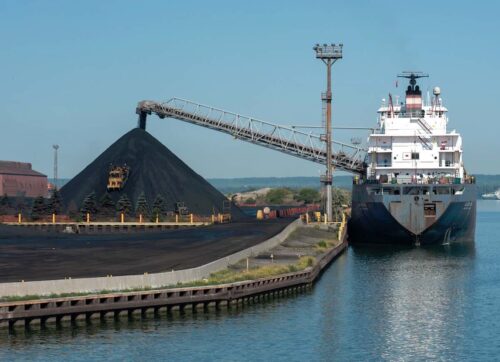Polar bears in virtually all regions will now have finished their intensive spring feeding, which means sea ice levels are no longer an issue.
A few additional seals won’t make much difference to a bear’s condition at this point, except perhaps for young bears that haven’t had a chance to feed as heavily as necessary over the spring due to inexperience or competition.
The only seals available on the ice for polar bears to hunt in early July through October are predator-savvy adults and subadults. But since the condition of the sea ice makes escape so much easier for the seals to escape, most bears that continue to hunt are unsuccessful – and that’s been true since the 1970s. So much for the public hand-wringing over the loss of summer sea ice on behalf of polar bear survival!
Polar bears in most areas of the Arctic are at their fattest by late June. They are well prepared to go without food for a few months if necessary – a summer fast is normal for polar bears, even for those that spend their time on the sea ice.
Putting on hundreds of pounds of fat in the spring to last through periods of food scarcity later in the year (at the height of summer and over the winter) is the evolutionary adaptation that has allowed polar bears to live successfully in the Arctic.
The fact is, most ringed seals (the primary prey species of polar bears worldwide) move into open water to feed after they have completed their annual molt, which occurs by late June to mid-July for adults and subadults.
Newborn pups leave the ice soon after being weaned, usually by the end of May in southern regions (like Hudson Bay) and by late June in the Canadian Arctic Archipelago (Kelly et al. 2010; Smith 1975, 1987; Whiteman et al. 2015).
Adult and subadult ringed seals do most of their feeding in open water over the ice-free season in summer (Crawford et al. 2015; Rode et. al. 2014, 2018).
Thus, the most abundant prey of polar bears is essentially unavailable after late June (and earlier than that in Hudson Bay and the Davis Strait). After that time, only predator-savvy adult and subadult ringed seals haul out on the ice.
Adults and subadults of the similarly-distributed but much larger (and less abundant) bearded seal tend to remain with the ice over the summer (Cameron et al. 2010:11-12) and are most likely to be available to polar bears that remain on the sea ice over the summer throughout the Arctic.
Some adult harp seals (an abundant, strictly North Atlantic species) may also be available to bears on the pack ice in the Baffin Bay and the Davis Strait, as well in the northern sections of the Barents and Kara Seas, and northern East Greenland (Sergeant 1991).
However, research on polar bear feeding has shown that from late June to October, bears are rarely successful at catching seals because broken and melting ice affords so many escape routes for the seals. Bears may stalk the seals but they often get away (see video snapshot and video below)
[Full video clip below]
The facts on this feeding pattern were documented back in the 1970s and 1980s and are assumed by polar bear biologists to be true today (Derocher et al. 2002; Stirling 1974; Stirling and Øritsland 1995; Obbard et al. 2016; Pilfold et al. 2015).
They just don’t say so in public.
This intensive spring feeding phenomenon means that virtually all polar bears residing in so-called Seasonal and Divergent ecoregions (see above green and purple areas) – predicted to be extirpated by 2050, according to documents supporting the ESA listing of polar bears as ‘threatened’ with extinction (Amstrup et al. 2007; USFWS 2008) – effectively fast from late spring to early fall whether they spend this time on land or on the sea ice.
Which means we should indeed be worried if there is NO sea ice by the end of May, or even late June, across the Arctic but that’s nowhere near happening. There was perhaps slightly less ice this year at 21 June than in the early 1980s but a bit less is not the same as none.
To imply that slightly less ice at this time of year impacts polar bears and seals suggests they are incapable of moving laterally in response to changing conditions – which is clearly not true.
For example, many ringed seals and polar bears of the Southern Beaufort moved west to the Chukchi and Bering Seas in 1974 and 1975 when thick spring ice made staying in the Beaufort untenable (Burns et al. 1975; Stirling et al. 1975a,b; Stirling et al. 1982, Stirling et al. 1985:75).
If bears and seals were able to move massive distances to avoid excessive ice in the Beaufort in the 1970s, they can certainly move short distances in response to less ice now. Some might call it adaptation but flexibility is also an apt description.
So much for the Save our Sea Ice campaign run by Steven Amstrup and the drama queens at Polar Bears International, scheduled for 15 July.
Here is what PBI claimed two years ago:
“This summer [2016], the sea ice retreat could well break records, impacting polar bears, other wildlife, and people too. Sea ice loss in the month of May covered an area three times larger than the state of California compared with the historical average.” [my bold]
However, by July 15, few bears will be eating seals even if they remain on the ice – and most bears will have effectively stopped feeding many weeks before that. There is no evidence that the “sea ice loss” in May 2016 had any effect on polar bears whatsoever and the same will be true this year.
Knowing the facts means you won’t be taken in by the hype. This year, PBI are focusing on summer ice lows (in September) and the recent “low” extents reached in the four previous winters as if there is any evidence that a bit less ice in winter has any effect on polar bear health and survival (there is not).
Sea ice maps (NSIDC Masie) below for the end of May 2016 vs. 2018:
And now (2 July 2018)…
Read rest at Polar Bear Science


























